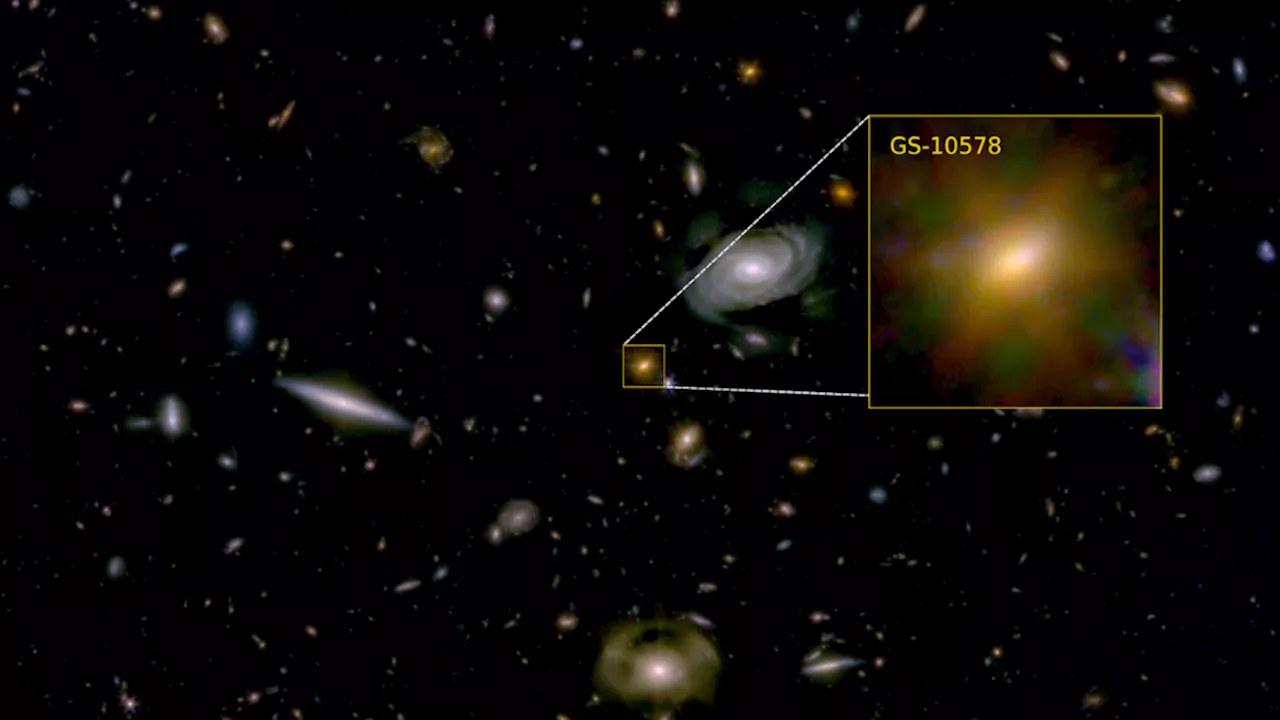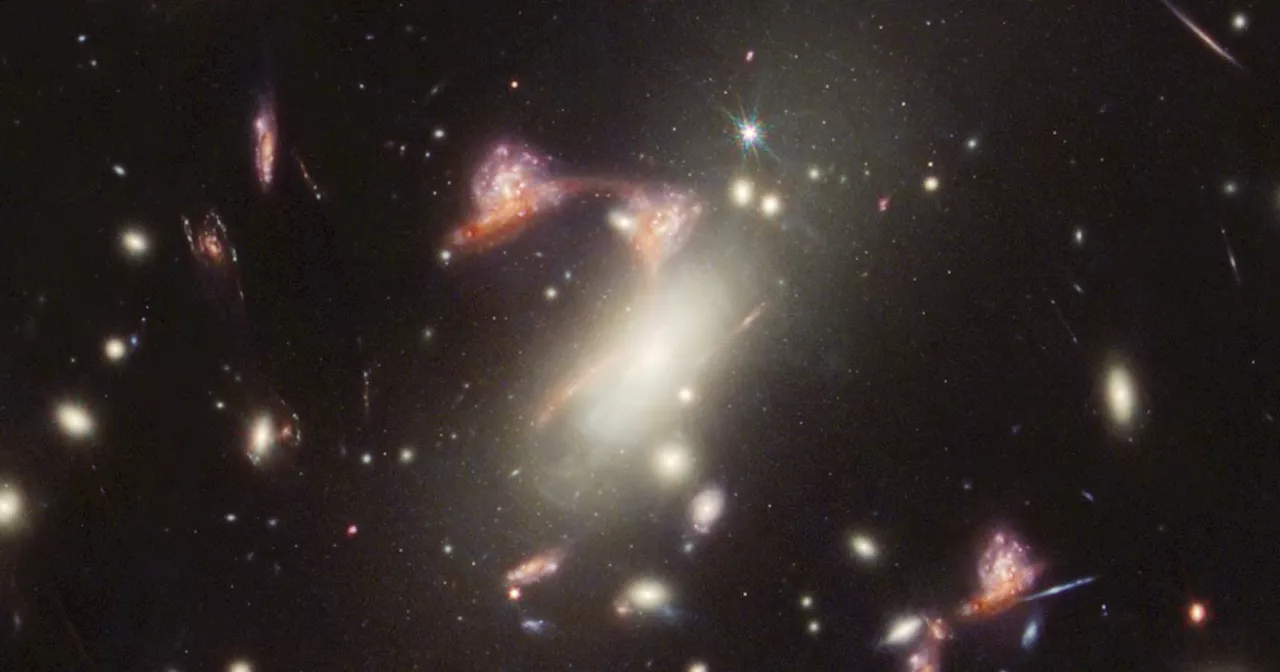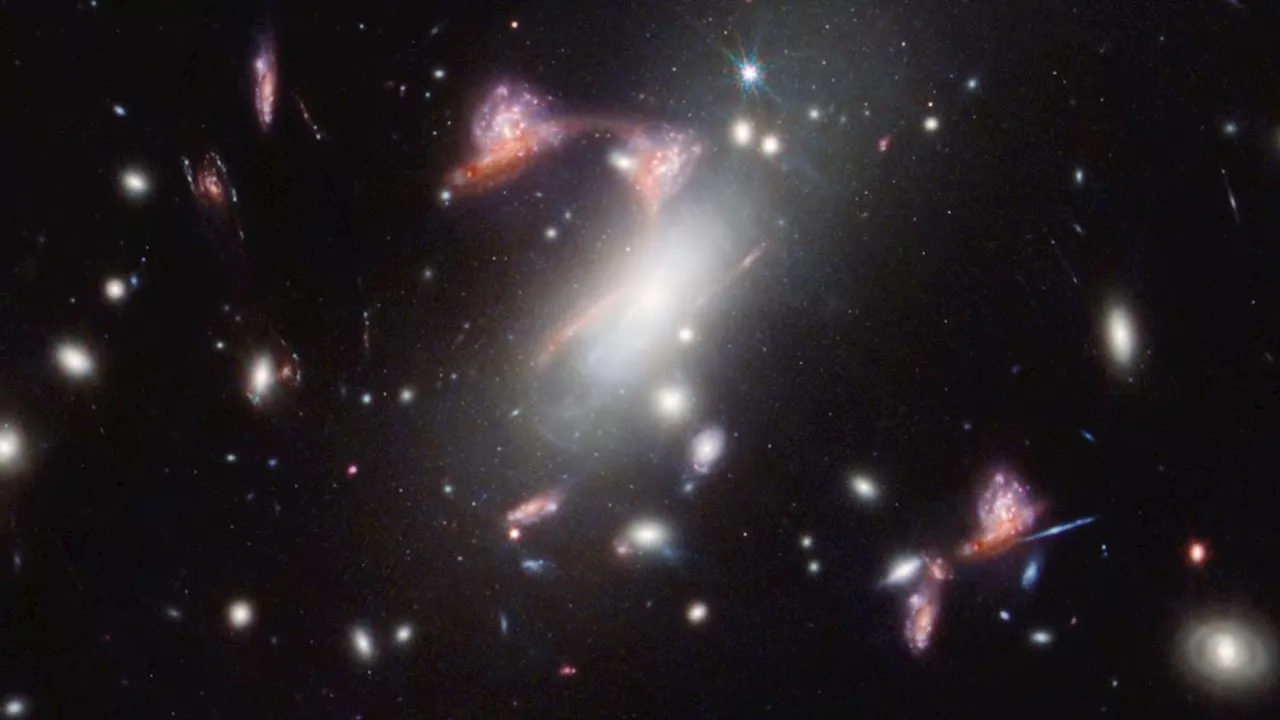Astronomers have used the NASA/ESA James Webb Space Telescope to confirm that supermassive black holes can starve their host galaxies of the fuel they need to form new stars.
The international team, co-led by the University of Cambridge, used Webb to observe a galaxy roughly the size of the Milky Way in the early universe, about two billion years after the Big Bang. Like most large galaxies, it has a supermassive black hole at its centre. However, this galaxy is essentially 'dead': it has mostly stopped forming new stars.
"In the early universe, most galaxies are forming lots of stars, so it's interesting to see such a massive dead galaxy at this period in time," said co-author Professor Roberto Maiolino, also from the Kavli Institute for Cosmology."If it had enough time to get to this massive size, whatever process that stopped star formation likely happened relatively quickly."
The mass of gas being ejected from the galaxy is greater than what the galaxy would require to keep forming new stars. In essence, the black hole is starving the galaxy to death. The results are reported in the journal"We found the culprit," said D'Eugenio."The black hole is killing this galaxy and keeping it dormant, by cutting off the source of 'food' the galaxy needs to form new stars.
"We knew that black holes have a massive impact on galaxies, and perhaps it's common that they stop star formation, but until Webb, we weren't able to directly confirm this," said Maiolino."It's yet another way that Webb is such a giant leap forward in terms of our ability to study the early universe and how it evolved."
Astrophysics Black Holes Stars Astronomy Cosmology Extrasolar Planets Nebulae
United States Latest News, United States Headlines
Similar News:You can also read news stories similar to this one that we have collected from other news sources.
 James Webb Space Telescope witnesses a black hole 'killing' its galaxy (photo)Robert Lea is a science journalist in the U.K. whose articles have been published in Physics World, New Scientist, Astronomy Magazine, All About Space, Newsweek and ZME Science. He also writes about science communication for Elsevier and the European Journal of Physics. Rob holds a bachelor of science degree in physics and astronomy from the U.K.
James Webb Space Telescope witnesses a black hole 'killing' its galaxy (photo)Robert Lea is a science journalist in the U.K. whose articles have been published in Physics World, New Scientist, Astronomy Magazine, All About Space, Newsweek and ZME Science. He also writes about science communication for Elsevier and the European Journal of Physics. Rob holds a bachelor of science degree in physics and astronomy from the U.K.
Read more »
 Monster black hole is starving its host galaxy to death, James Webb telescope revealsBen Turner is a U.K. based staff writer at Live Science. He covers physics and astronomy, among other topics like tech and climate change. He graduated from University College London with a degree in particle physics before training as a journalist.
Monster black hole is starving its host galaxy to death, James Webb telescope revealsBen Turner is a U.K. based staff writer at Live Science. He covers physics and astronomy, among other topics like tech and climate change. He graduated from University College London with a degree in particle physics before training as a journalist.
Read more »
 James Webb spots another pair of galaxies forming a question markWebb has stumbled across a question mark-shaped galaxy, and the reasons for its uniqueness reveal how the telescope looks at some of the most distant galaxies.
James Webb spots another pair of galaxies forming a question markWebb has stumbled across a question mark-shaped galaxy, and the reasons for its uniqueness reveal how the telescope looks at some of the most distant galaxies.
Read more »
 Space photo of the week: James Webb telescope catches baby stars roaring to lifeJamie Carter is a freelance journalist and regular Live Science contributor based in Cardiff, U.K. He is the author of A Stargazing Program For Beginners and lectures on astronomy and the natural world. Jamie regularly writes for Space.com, TechRadar.com, Forbes Science, BBC Wildlife magazine and Scientific American, and many others.
Space photo of the week: James Webb telescope catches baby stars roaring to lifeJamie Carter is a freelance journalist and regular Live Science contributor based in Cardiff, U.K. He is the author of A Stargazing Program For Beginners and lectures on astronomy and the natural world. Jamie regularly writes for Space.com, TechRadar.com, Forbes Science, BBC Wildlife magazine and Scientific American, and many others.
Read more »
 James Webb Space Telescope finds 6 wandering 'rogue' planets that formed just like starsKeith Cooper is a freelance science journalist and editor in the United Kingdom, and has a degree in physics and astrophysics from the University of Manchester.
James Webb Space Telescope finds 6 wandering 'rogue' planets that formed just like starsKeith Cooper is a freelance science journalist and editor in the United Kingdom, and has a degree in physics and astrophysics from the University of Manchester.
Read more »
 James Webb Space Telescope zooms in on giant question mark in space (image)Sharmila Kuthunur is a Seattle-based science journalist covering astronomy, astrophysics and space exploration. Follow her on X skuthunur.
James Webb Space Telescope zooms in on giant question mark in space (image)Sharmila Kuthunur is a Seattle-based science journalist covering astronomy, astrophysics and space exploration. Follow her on X skuthunur.
Read more »
